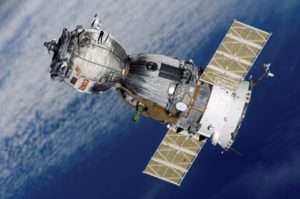Satellite security technology refers to the various methods and systems used to protect satellites and their related infrastructure from unauthorised access, interference, and malicious attacks. In today’s interconnected world, satellite security has become increasingly important as satellites are used for a wide range of critical applications, such as telecommunications, navigation, and military operations.
One of the key benefits of satellite security technology is the ability to protect against jamming and interference. Jamming is the deliberate transmission of radio frequency signals with the intent to disrupt the normal operation of a satellite. This can be done by malicious actors with the goal of disrupting communications or navigation systems. To counter this threat, satellite security technology includes anti-jamming techniques such as frequency hopping and spread spectrum communication.
Another benefit of satellite security technology is the ability to protect against spoofing. Spoofing is the act of transmitting false signals to a satellite in order to trick it into believing it is communicating with a legitimate source. This can be used to disrupt navigation systems or gain unauthorised access to sensitive information. To counter this threat, satellite security technology includes authentication methods such as digital signatures and encryption.
In addition to these technical measures, satellite security also includes physical security measures to protect against unauthorised access and sabotage. This can include measures such as restricted access to satellite control facilities, surveillance systems, and the use of security personnel.
Satellite security technology also plays a vital role in protecting national security and military operations. Military satellites are used for a wide range of critical missions, such as intelligence gathering, communication, and navigation. To protect these assets, satellite security technology includes measures such as stealth technology to make satellites difficult to detect and target, and the ability to rapidly move or reconfigure satellites to evade an attack.
Another important benefit of satellite security technology is its ability to support disaster response and humanitarian efforts. Satellites are often used to provide critical communications and imagery during natural disasters and other emergencies. To ensure that these systems remain operational during these times, satellite security technology includes measures such as the ability to rapidly restore communications and the ability to prioritise emergency communications.
Satellite security technology also plays a key role in supporting the global economy by enabling the use of satellite-based services such as telecommunications, navigation, and remote sensing. These services support a wide range of industries, such as transportation, agriculture, and resource management. To ensure the continued availability of these services, satellite security technology includes measures such as the ability to detect and respond to threats, and the ability to quickly restore services in the event of an attack.
Overall, satellite security technology provides a wide range of benefits, including the ability to protect against jamming and interference, spoofing, and unauthorised access, as well as supporting national security, disaster response and humanitarian efforts, and the global economy. As the reliance on satellite-based services continues to grow, the importance of satellite security technology will only increase.
In conclusion, satellite security technology is an essential aspect of modern society, as satellites are used for a wide range of critical applications. The use of anti-jamming, anti-spoofing, and other security measures help protect these assets from unauthorised access, interference, and malicious attacks. It also helps to support national security, disaster response and humanitarian efforts, and the global economy. As the reliance on satellite-based services continues to grow, it is important that organisations and governments around the world continue to invest in the development and implementation of advanced satellite security technology.





